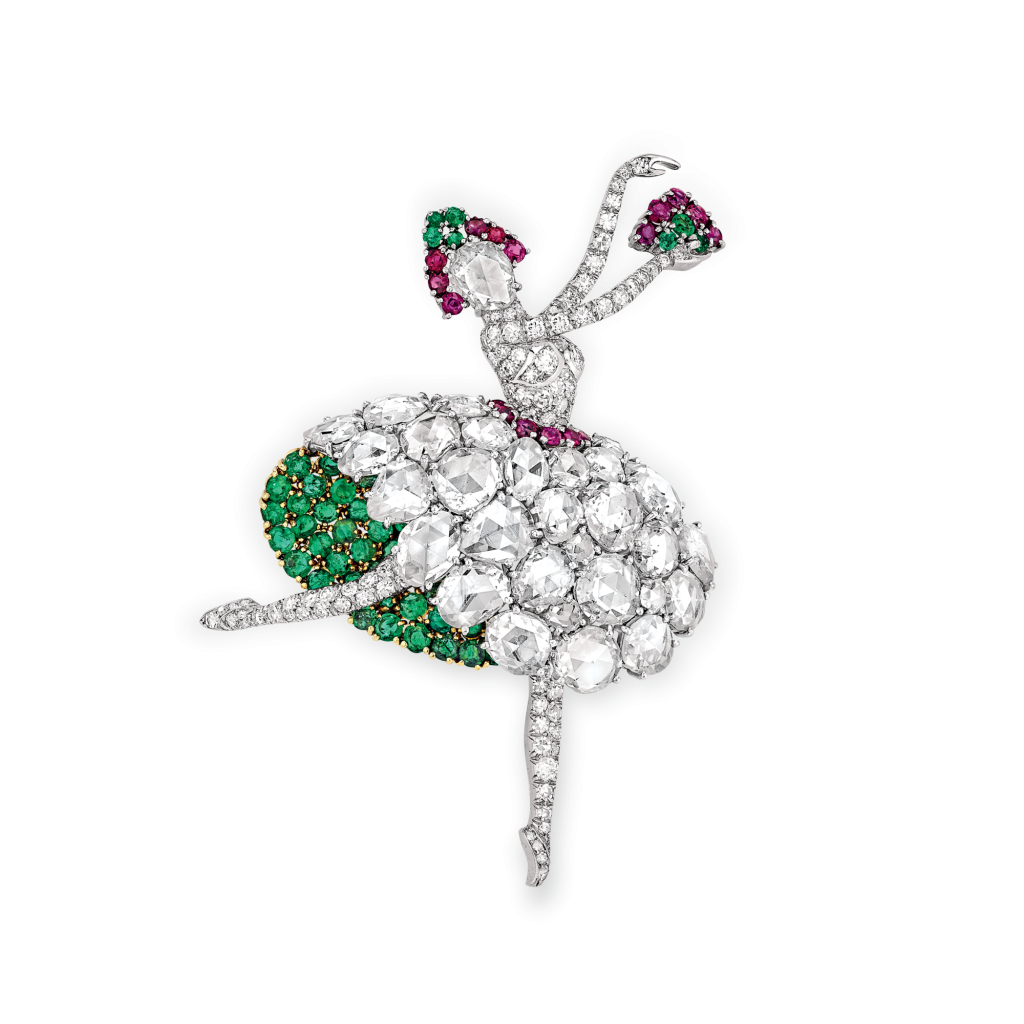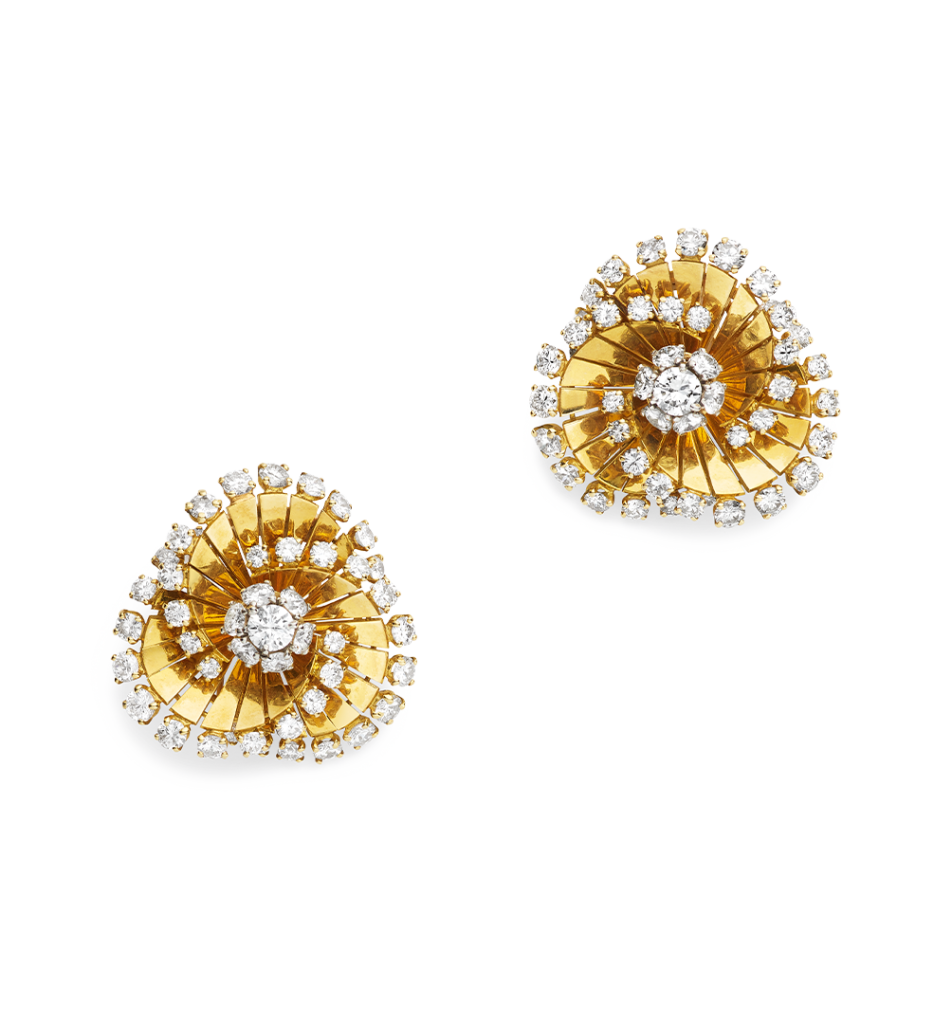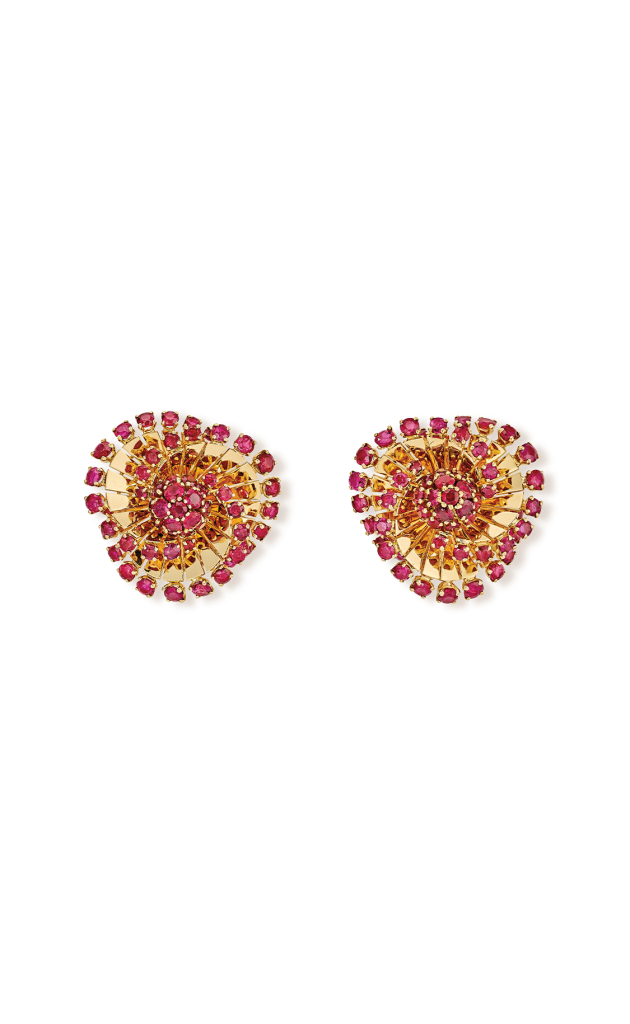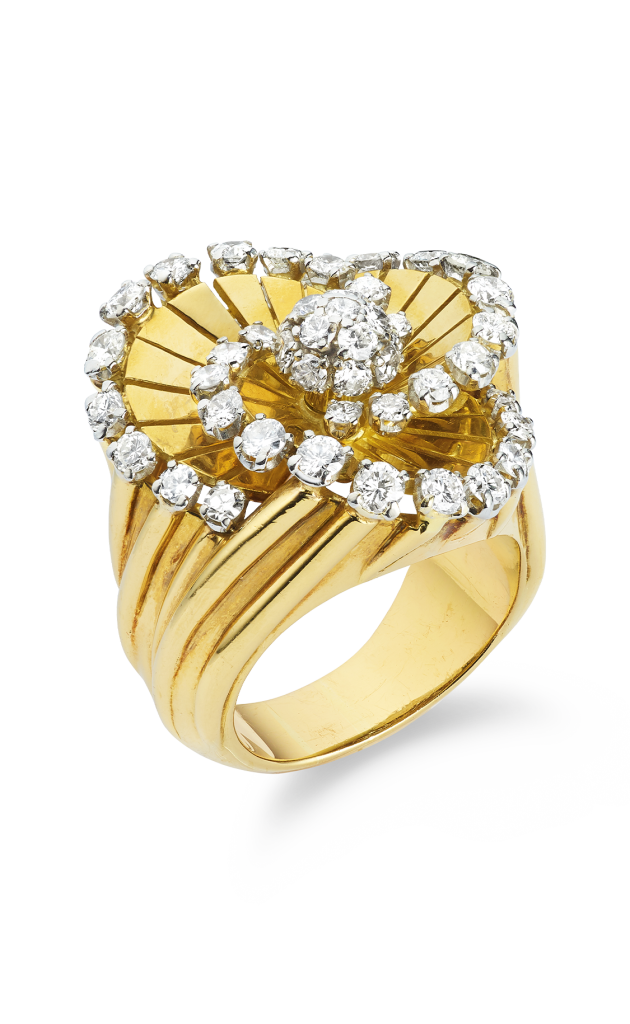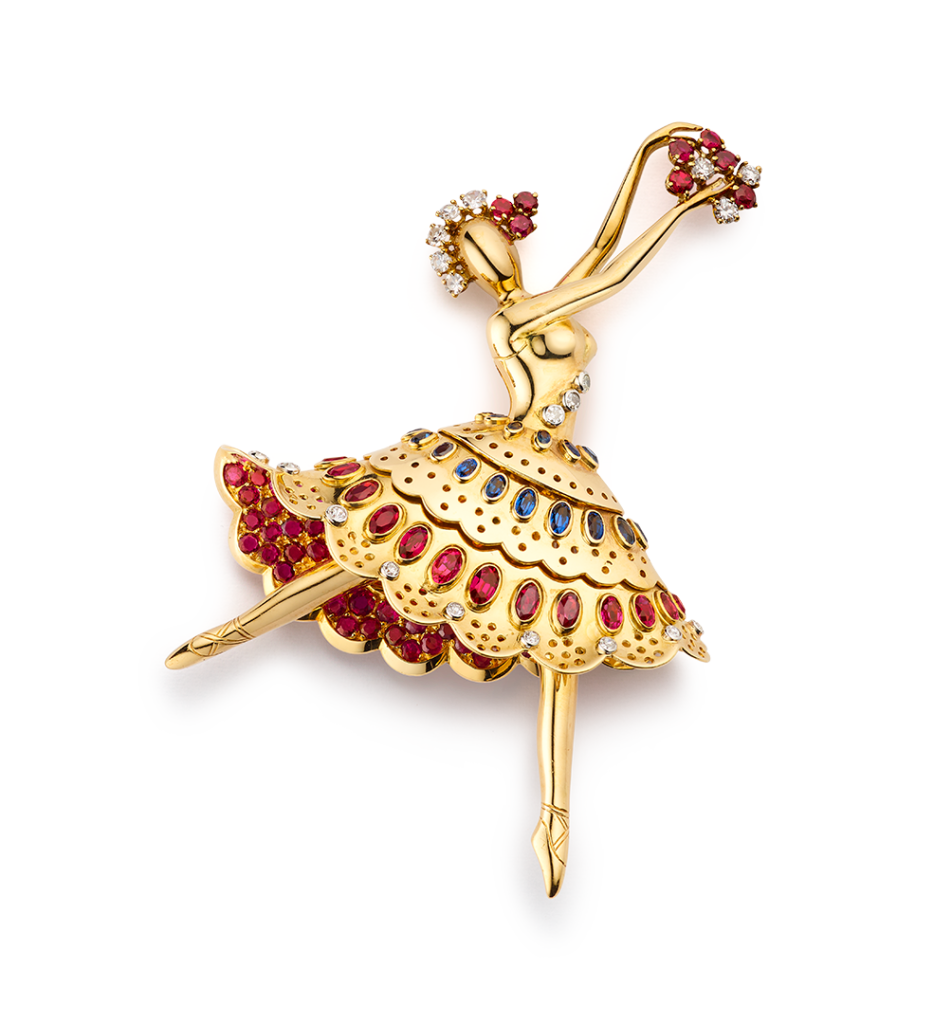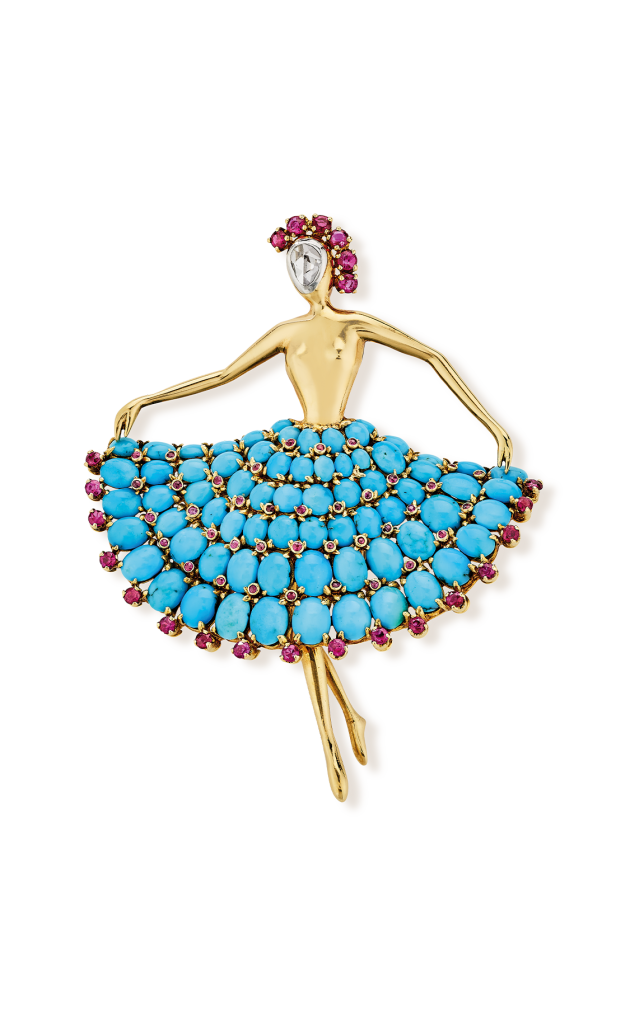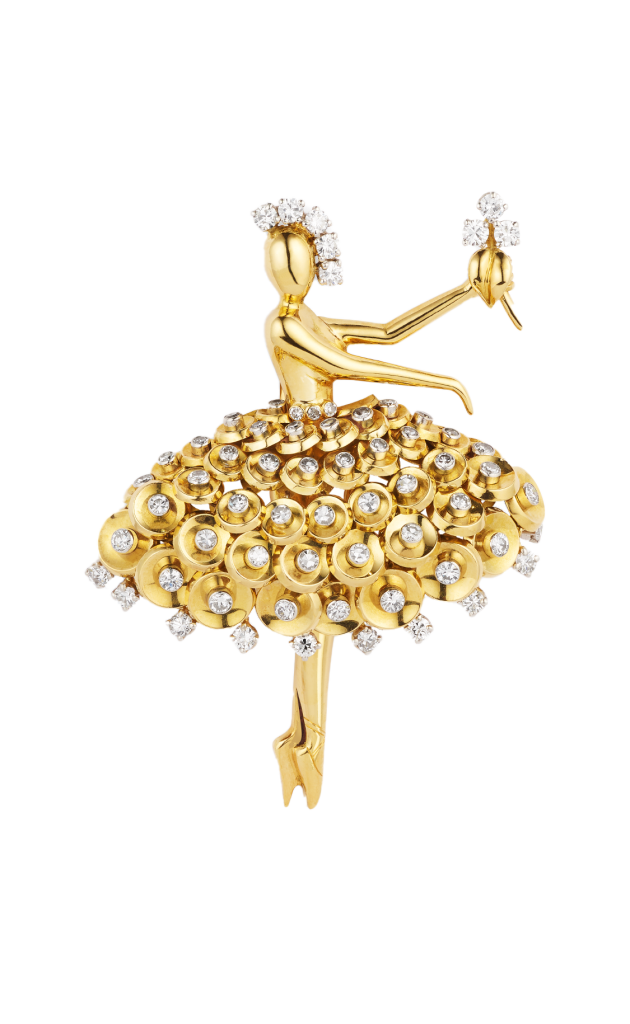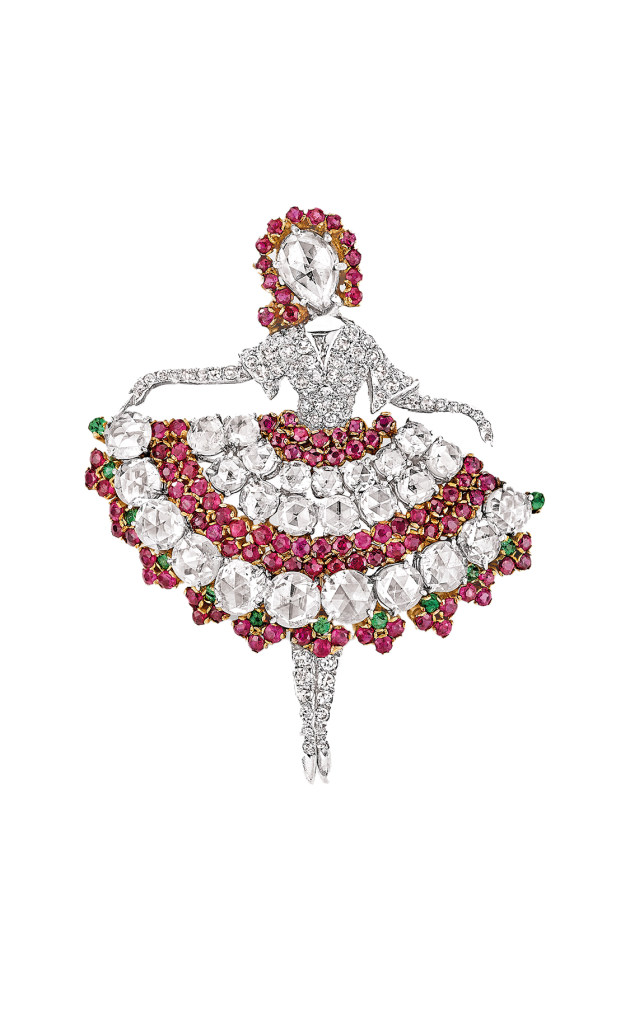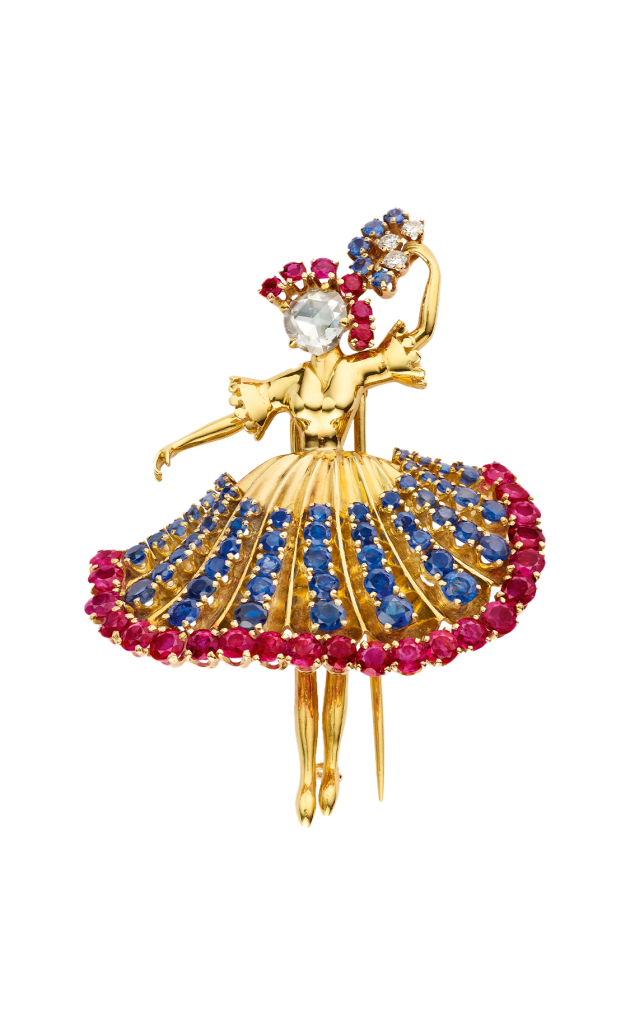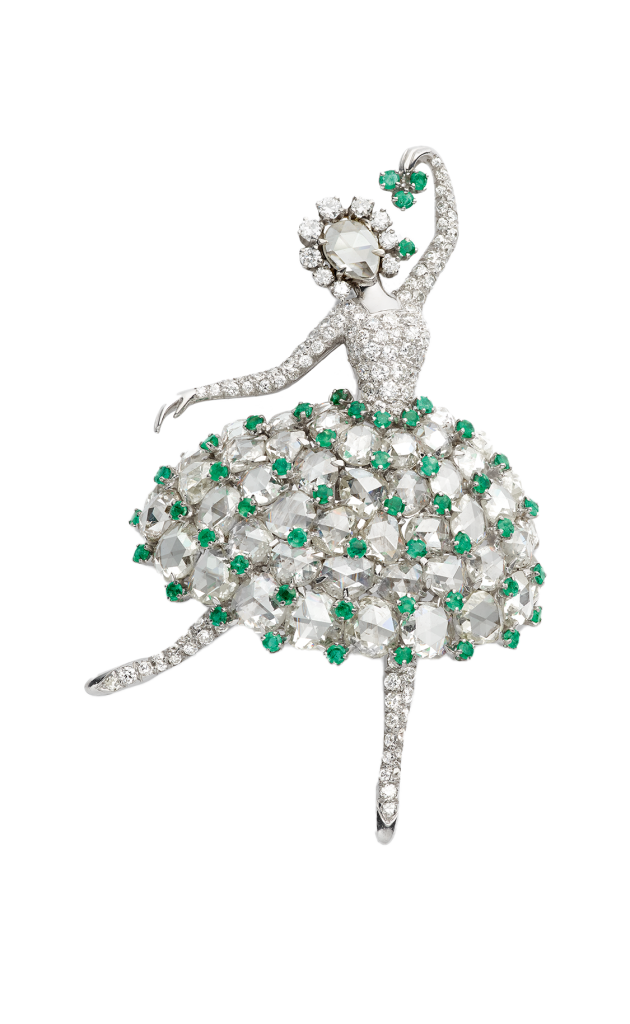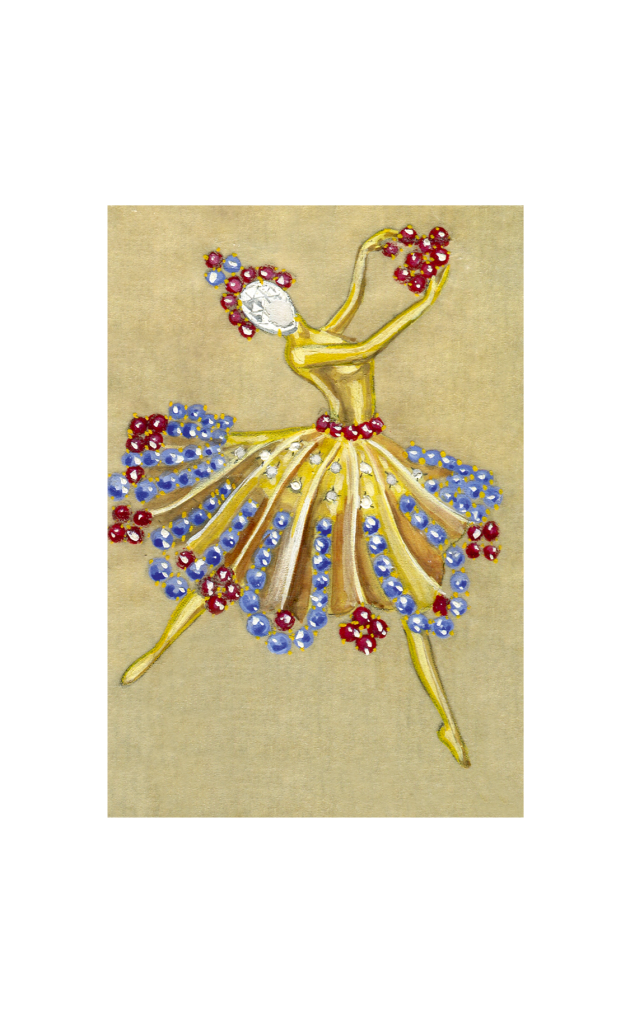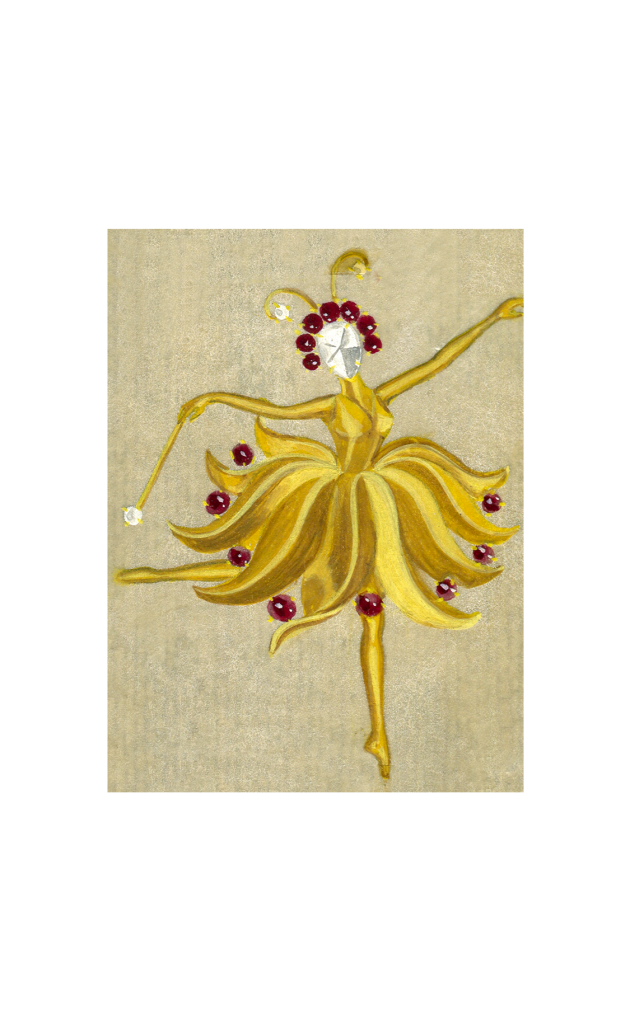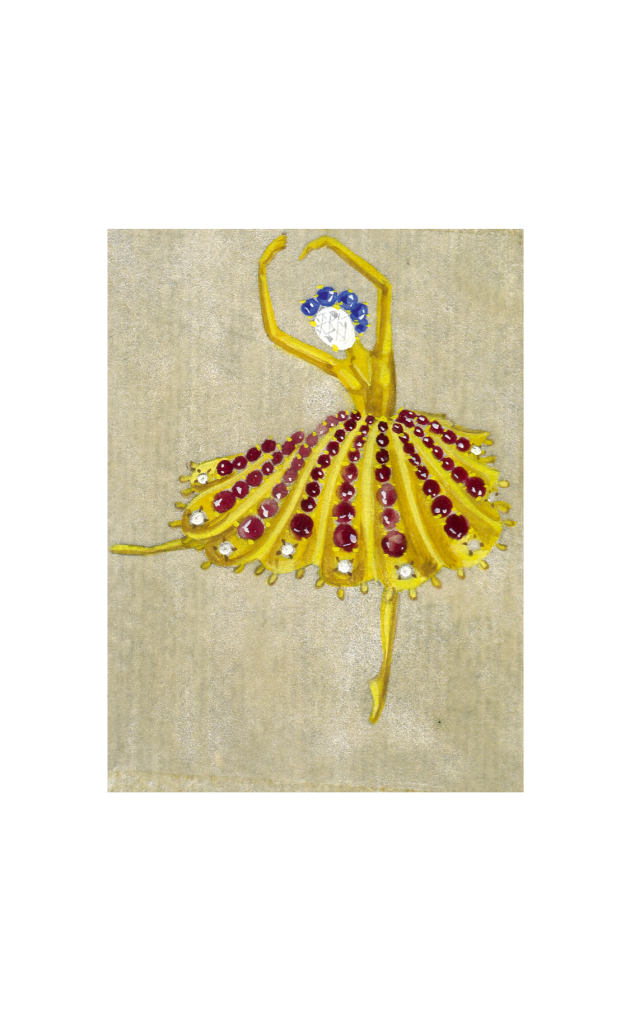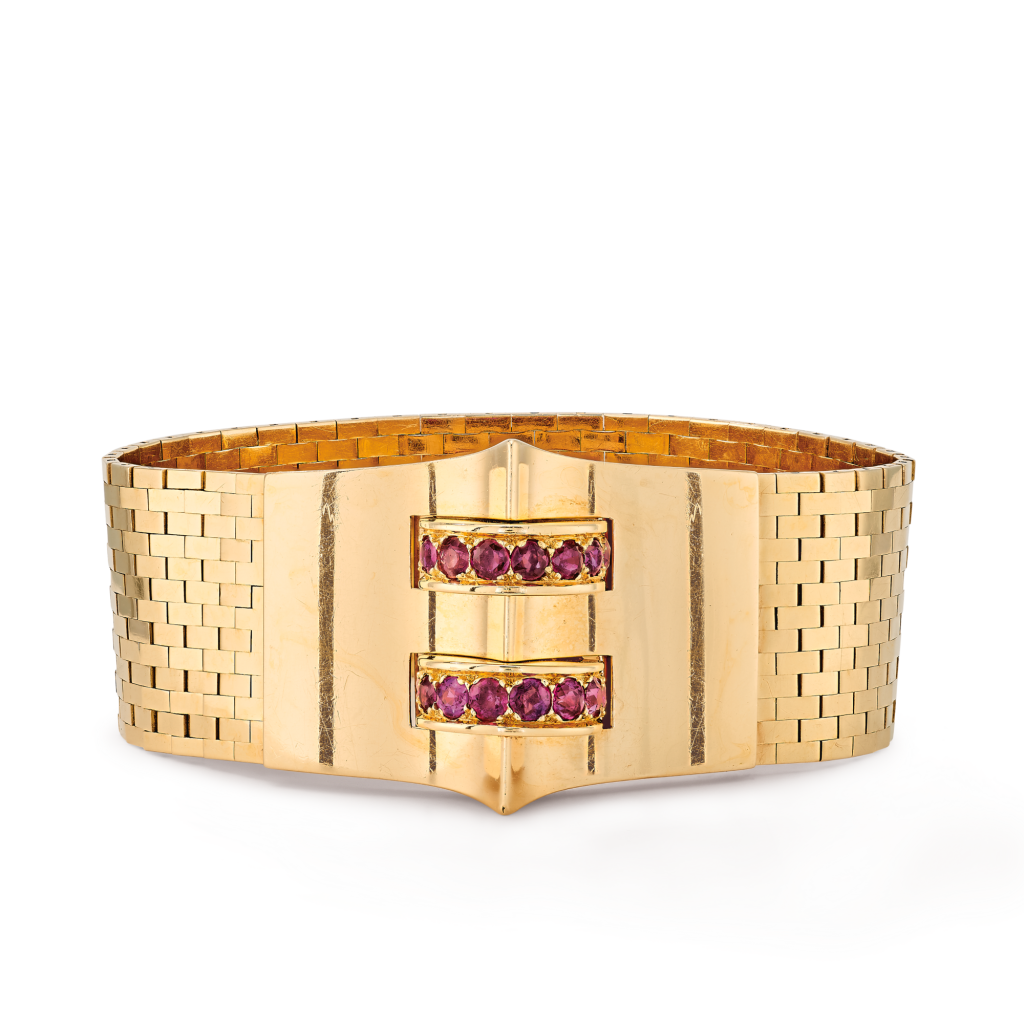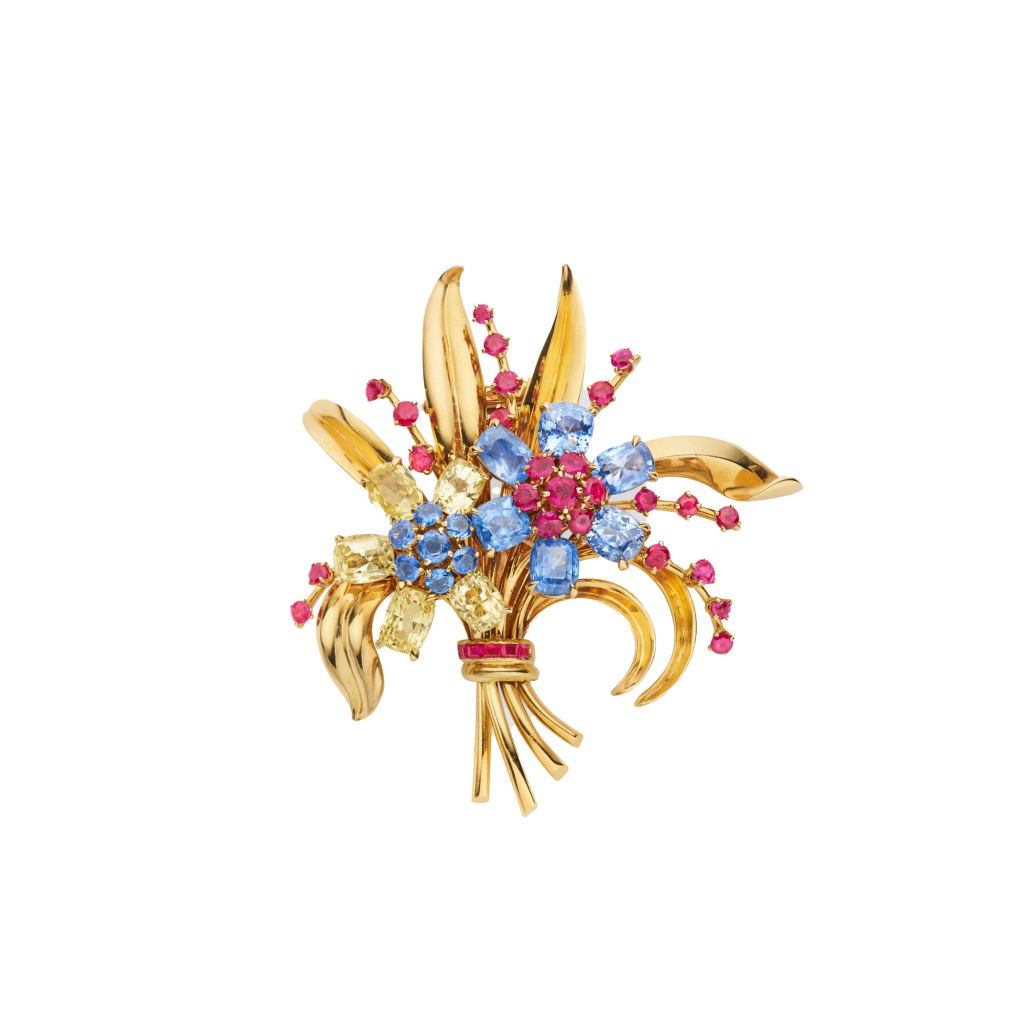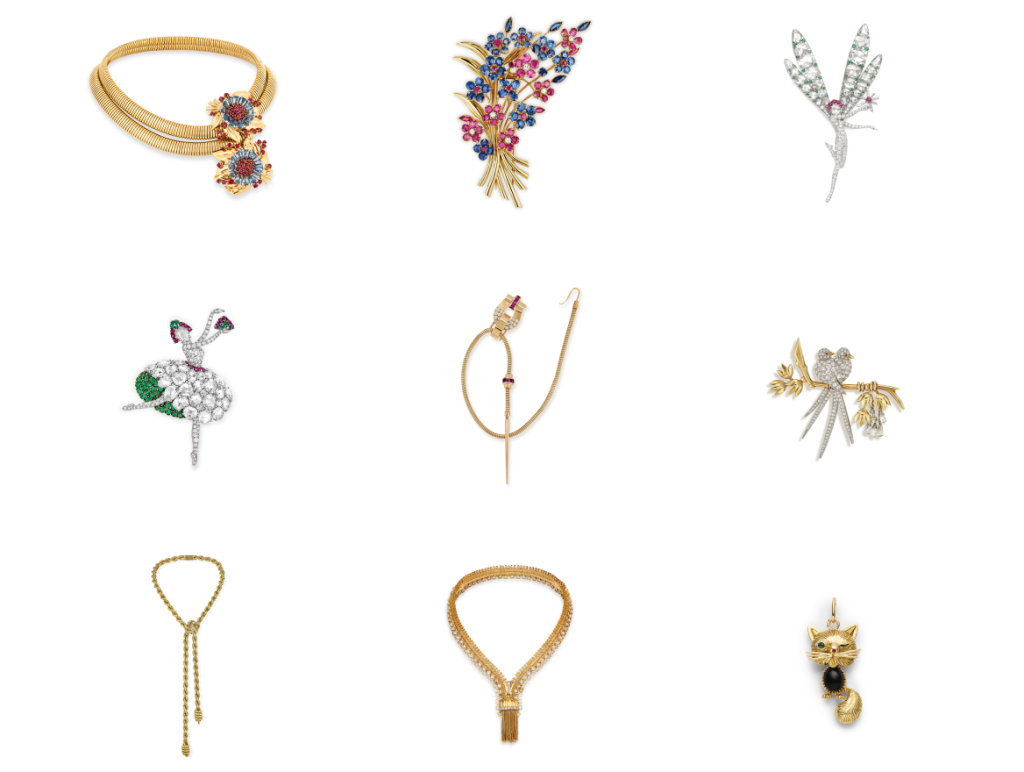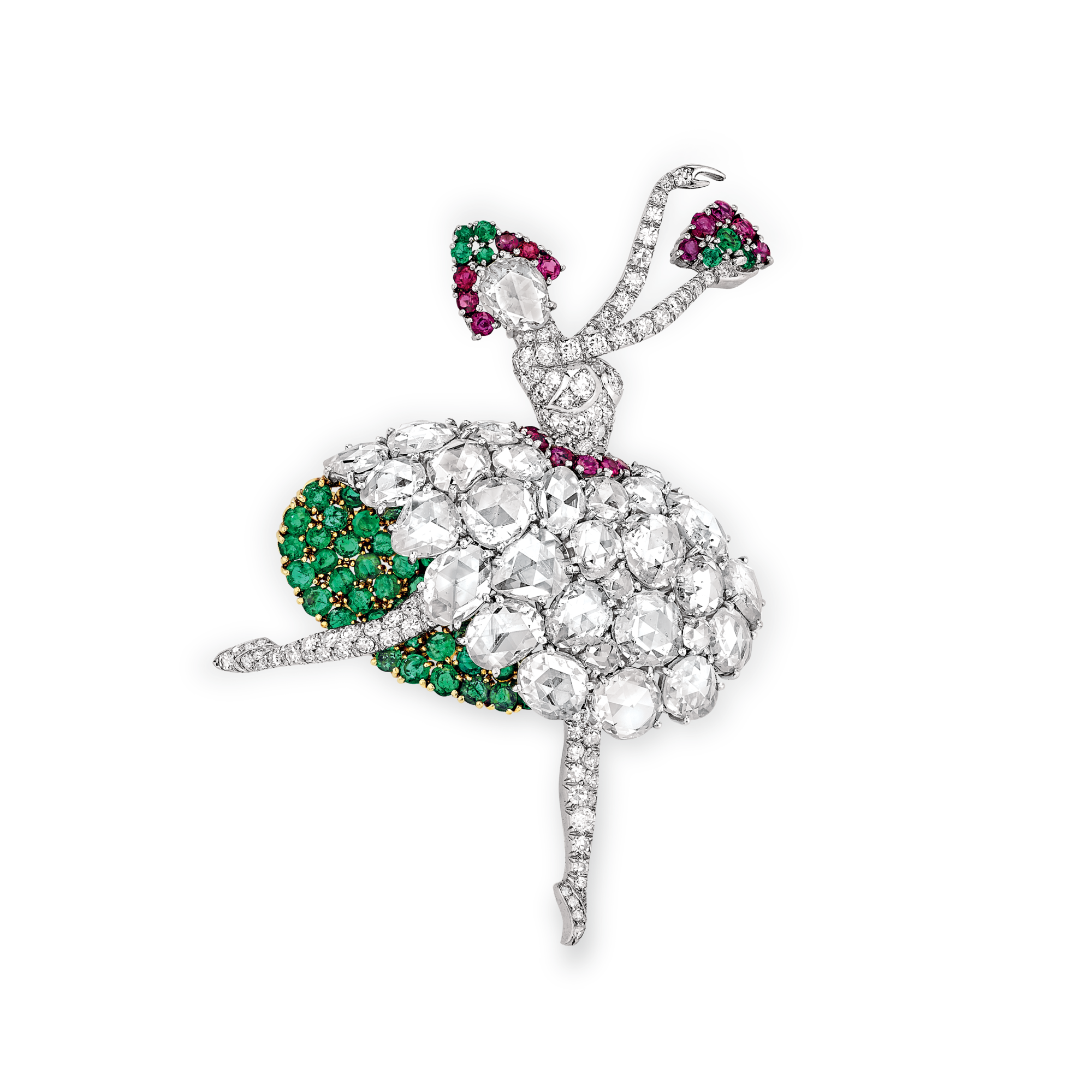
Dancer clip
Creation details
- Creation year 1941
- Usage Clip
- Dimensions 70 × 50 mm
Classical ballet dancers are extremely rare as a motif in the jewelry arts. Van Cleef & Arpels introduced them in 1941, and this clip was one of the earliest examples.
The essence of choreographic momentum is captured by the figure’s pure outline in platinum pave-set with brilliant-cut diamonds. The dancer’s body, pave-set with different stones, contrasts with her face composed of a single rose-cut diamond. This antique diamond cut, together with the claw setting, is also used for the dancer’s tutu, composed of twenty-nine stones of different weights. It is highlighted with a row of round rubies encircling her waist, while the underside of the tutu is colored with emeralds mounted on yellow gold claws. The ballerina’s headdress is adorned with circular rubies and emeralds.
Different versions of costume
This richly bejeweled treatment, found in other Dancer clips, varies from one model to another depending upon the metals and stones used. Platinum frequently replaced yellow gold in the dancers produced at this time. It is worked to imitate netting fabric and overlapping sequins like those sewn onto tutus. The ballerinas also had tutus made from rays of polished yellow gold ending in brilliants, like the motifs of the Whirl series.
A wide range of silhouettes
The dancers provided a wide range of silhouettes, as did their costumes. The pave-setting of diamonds and modeling of the precious metal created real “sculptures in [polished yellow] gold” 1Van Cleef & Arpels advertisement, Vogue US, December 1942. whose volumes reproduced movement seen from below. Stylized design was sometimes favored, the dancer’s arms and legs hinted at with nothing more than small, slightly twisting strips of gold to better convey momentum and aerial attitudes. This process was widely used by Van Cleef & Arpels for figurative motifs.
The iconography of classical ballets
Alongside the wealth of materials and variety of techniques found in these clips, they also displayed an abundant iconographic repertory taken from classical ballet. Indeed, many of the Maison’s creations were directly inspired by the classical ballet repertoire, notably, from 1943, powder compacts adorned with decoration inspired by Swan Lake, Petrushka, and Raymonda.
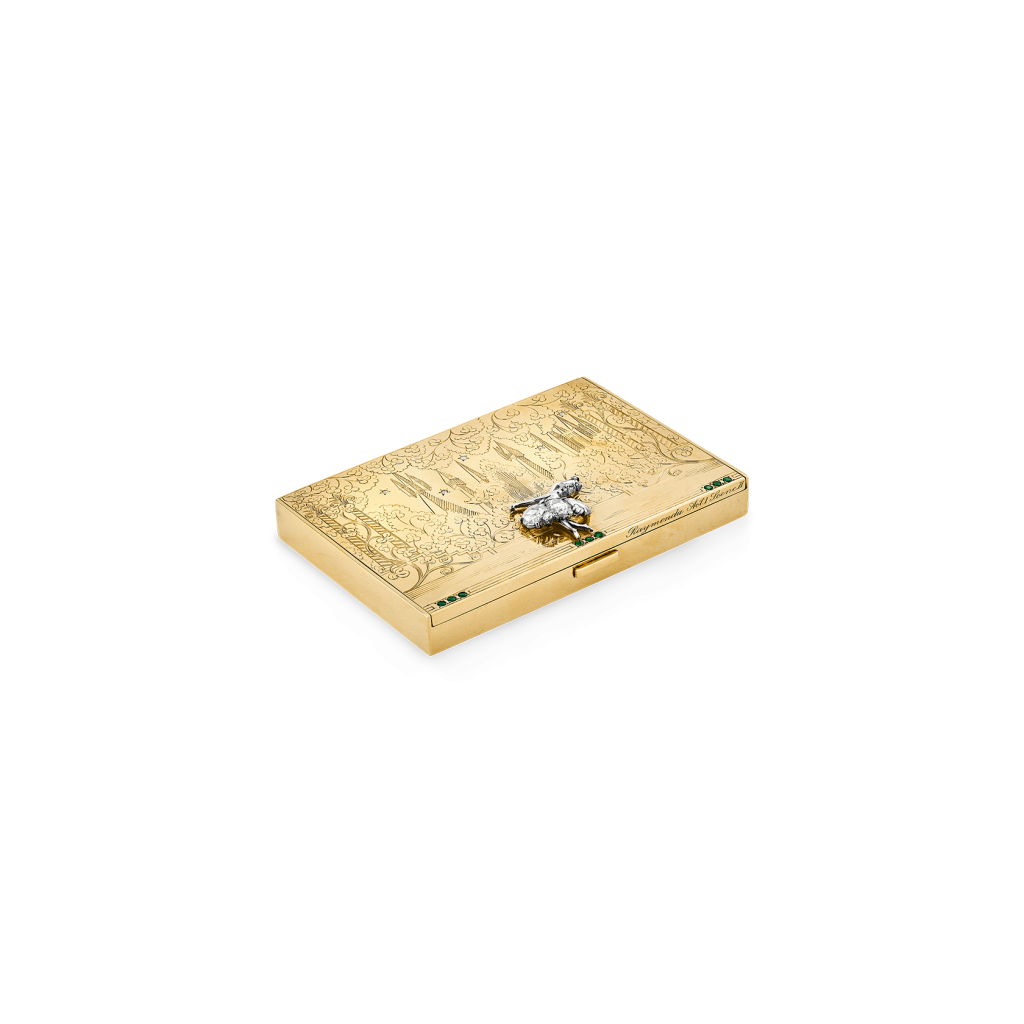
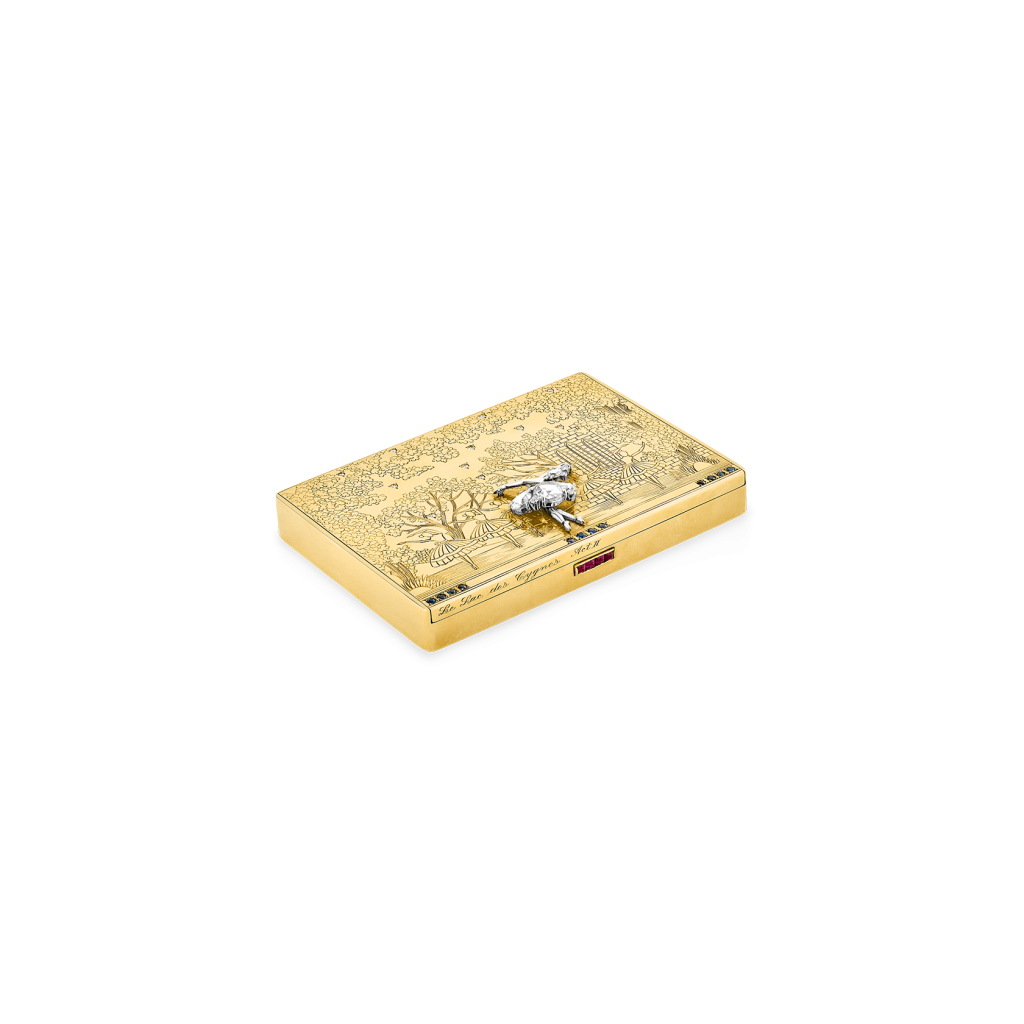
Another major creation drawn from the same repertoire, in 1951, was the Farandole necklace,2Name given to this model in the Van Cleef & Arpels Archives. composed of eleven ballerinas in graduated sizes. The prima ballerina Yvette Chauviré immortalized this creation in an advertisement featured in Vogue Paris in June 1951 in which she also wears a pair of Whirl earrings, proof of their link to the world of dance.
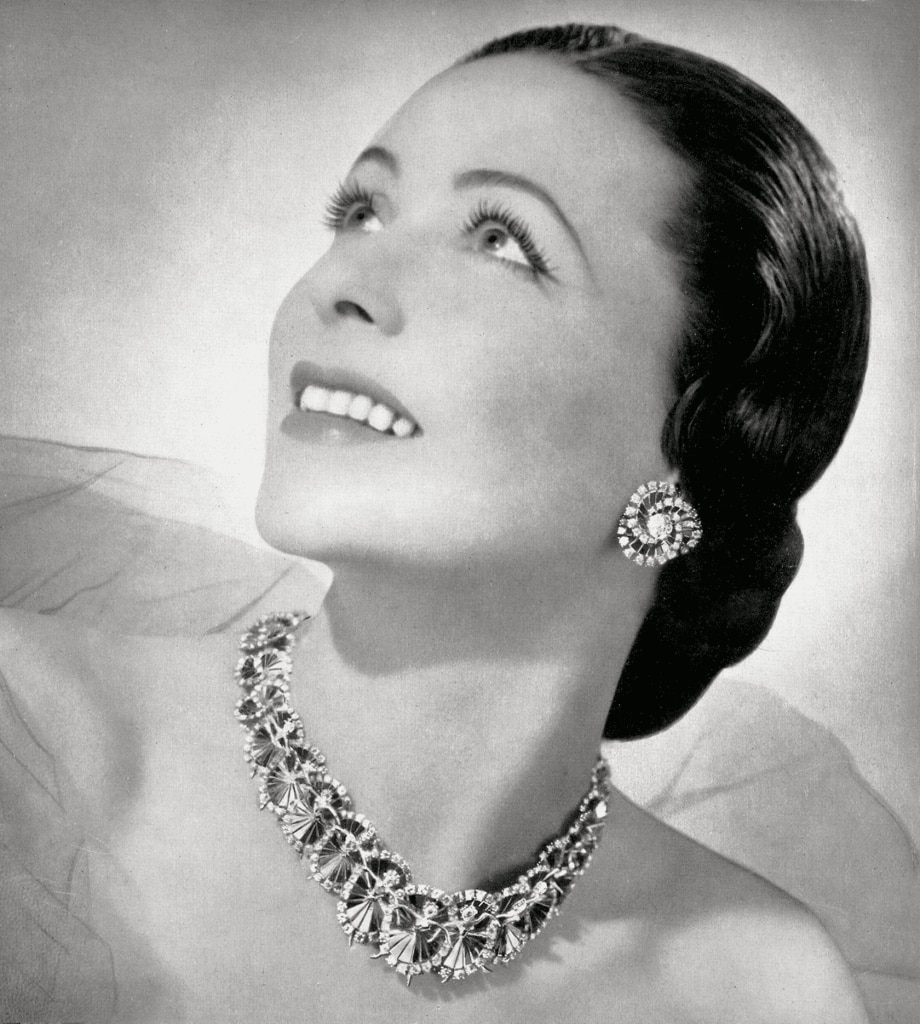
The influence of Edgar Degas
While the early Dancer clips designed by the Maison evoked the world of ballet, their iconography also reflected the historicist trend that took root in the 1940s. The Arpels family were particularly interested in the works of Edgar Degas, as seen in an advertisement stating that the Van Cleef & Arpels “ballerinas are inspired by the fluid grace of the Degas masterpieces.”(4) Nn December 17, 1956, “the original plaster cast of Degas’ Little Fourteen-Year-Old Dancer, lent by M. Knoedler & Co., [was] exhibited on the stage of the Empire Room of the Waldorf Astoria” for a charity ball “organized under the patronage of Van Cleef & Arpels.”
A wide range of styles
While ballet was particularly well represented among the Maison’s creations, other types of dance were not forgotten, including swing and folkloric or traditional dances. In 1942, a Hawaiian hula dancer featured on a clip, and in 1947, the Andalusian clip captured a flamenco dancer. Three years later, in 1950, a Balinese Dancer clip depicted the rich ornamentation and costume of this art.
DRAWING OF DANCER CLIP
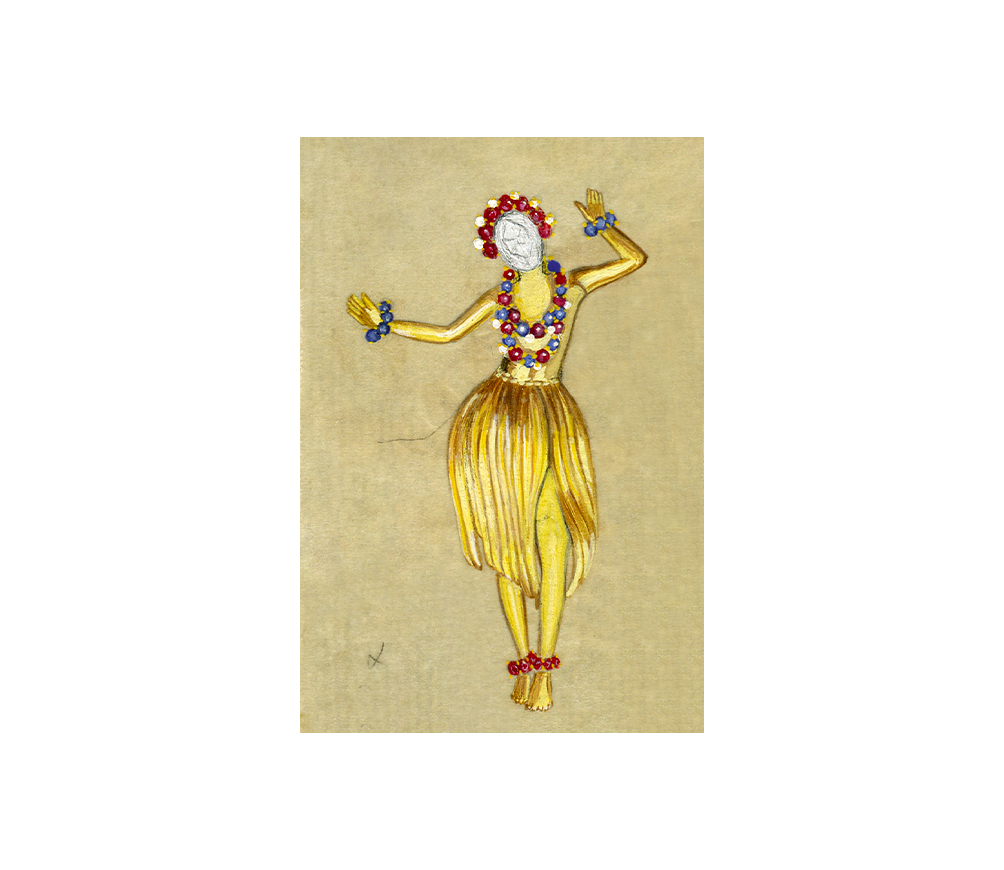
From 1941 to 1954, a broad range of the Maison’s stylistic developments were seen in the Dancer clips, with their iconographies and diverse jewelry-making techniques. The figure of the ballerina reappeared from time to time in the late 1960s, following Claude Arpels’ meeting with George Balanchine, and took on a new lease of life in the 1980s.
Dancer clip
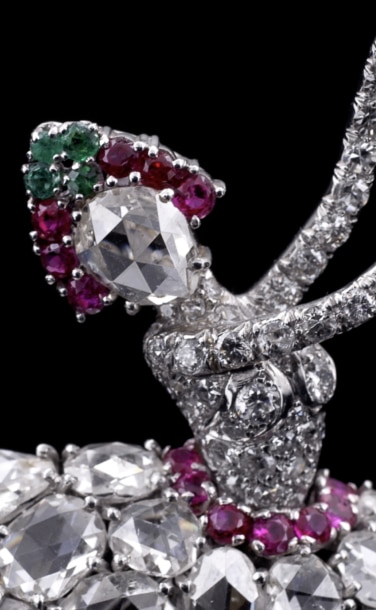
To go deeper
